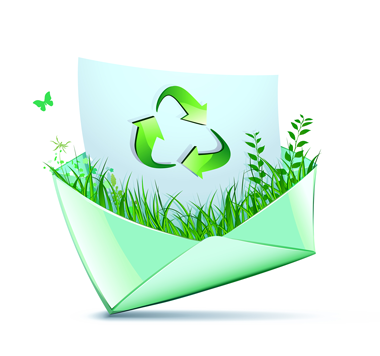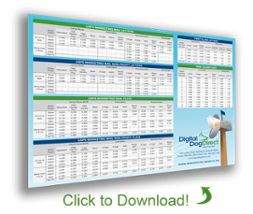2015 Annual Sustainability Report reveals USPS’s work towards protecting the environment through sustainability best practices.
 In a recent report, the USPS shared their steps towards minimizing their impact on the environment by reducing waste, energy use, and other consumption rates. Their Sustainability department develops and monitors policies that help achieve these goals in the organization.
In a recent report, the USPS shared their steps towards minimizing their impact on the environment by reducing waste, energy use, and other consumption rates. Their Sustainability department develops and monitors policies that help achieve these goals in the organization.
Here is a recap of some of their most impressive 2015 sustainability statistics and goals for the coming year:
341,952 tons of municipal solid waste was sent to landfills and 239,282 tons were recycled, including electronics, batteries and tires.
Goal: Divert 50 percent of solid waste from landfills to recycling by 2015 relative to a 2008 baseline.
Result: 41 percent landfill diversion rate.
Future Goal: Diver at least 50 percent of solid waste from landfills and at least 50 percent of non-hazardous materials from landfills.
The USPS has cut their greenhouse gasses (Scope 1, 2, and 3 GHG Emissions) by 12.4% since 2008.
Goal 1: Reduce Scope 1 and 2 emissions 20 percent by 2020 from a 2008 baseline.
Result 1: 15.8 percent decrease.
Goal 2: Reduce Scope 3 emissions 20 percent by 2020 from a 2008 baseline.
Result 2: 10.2 percent decrease.
Future Goal: By 2025, reduce Scope 1 and 2 emissions by 25 percent and Scope 3 GHG emissions by 30 percent relative to a 2008 baseline.
The USPS maintains over 32,000 facilities, making this category one of their highest in energy use. In 2013, they used 33.7 trillion Btu. In 2015, they used 19.6 trillion Btu—a 42% reduction from 2013.
Goal: Reduce energy intensity (energy use per square foot) 30 percent by 2015 based on a 2008 baseline.
Result: 29.5 percent reduction.
Future Goal: Reduce energy intensity 25 percent by 2025 relative to a 2015 baseline.
Goal: Reduce potable water use 10 percent per square foot by 2015 from a 2007 baseline.
Result: 22.7 percent reduction.
Future Goal: Continue to manage water consumption, decreasing potable water use per square foot by 36 percent by 2025 from a 2007 baseline.
The USPS employs one of the largest civilian fleets in operation. “In 2015, more than 212,000 postal vehicles drove nearly 1.4 billion miles, a 9.6 percent increase over 2014. Our vehicles used more than 171 million gasoline gallon equivalents (GGE), a 6.8 percent increase over 2014.” (USPS.com)
Goal: Reduce petroleum use 20 percent by 2015 from a 2005 baseline.
Result: 19 percent increase.
The USPS said the following with regards to this increase:
“This increase is a result of adding postal vehicles to rural routes, a growing number of delivery points and providing Sunday delivery service in select locations. We also drive alternative fuel vehicles, which in 2015 used 814,146 GGEs. In addition we acquired 4,428 new alternative fuel vehicles, bringing the total to 46,352.”
Goal: Increase alternative fuel use 100 percent by 2015 relative to a 2005 baseline.
Result: 60 percent increase.
Future Goal: 30 percent reduction in fleet-wide per-mile GHG emissions by 2025 relative to a 2014 baseline.
For more information, please refer to the report here: USPS.com



Comments